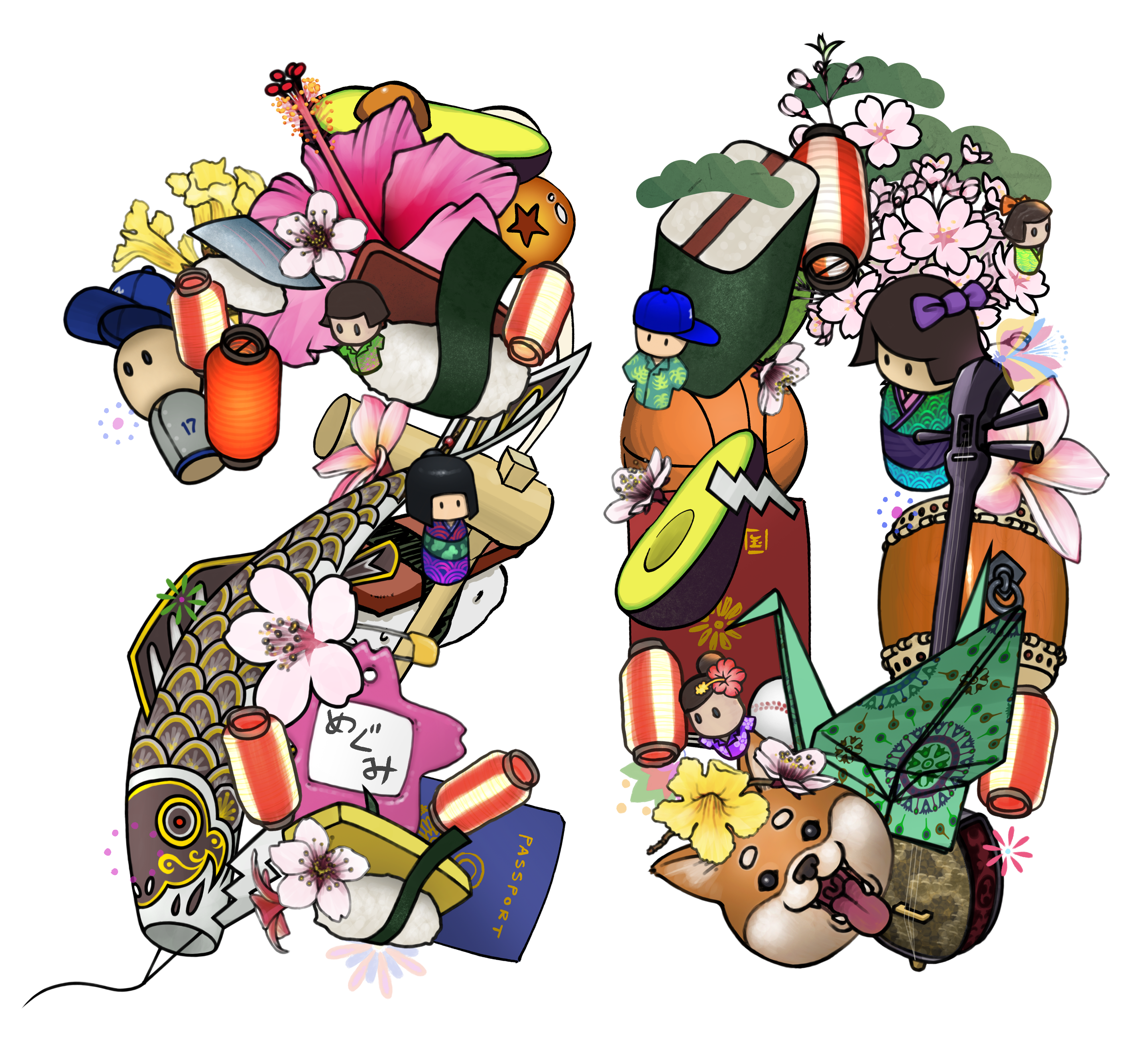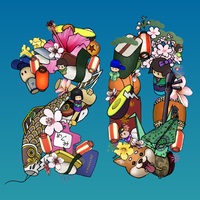Deportations and internment
During World War II, 2,264 Latin American Nikkei 1 -- Japanese residents and Latin American citizens -- were deported from their countries of residence to concentration camps in the United States. Thirteen Latin American countries 2 collaborated with the United States, arresting residents of Japanese descent and sending them aboard US military ships, knowing that no evidence of espionage or subversive activities had been found on them. Peru was the Latin American country that put the most effort into the task, deporting around 1,800 Peruvian Nikkei to the United States. Thirty years after the event, the American diplomat John K. Emmerson, in charge of the deportation program in Peru, wrote:
- “The imprisonment of the Japanese of Peru…was clearly a violation of human rights and was not justified by any threat to the security of the Western Hemisphere.” 3
When the Nikkei colony realized that the local police had orders to capture prominent members of the community, some hid in remote villages. Seiiche Higashide, president of the Japanese Association of the small town of Ica, Peru, dug under his house and built a room there, where he lived for almost a year until he was deported in 1944. Higashide recounts in his memoirs, “Goodbye to Tears,” that the Peruvian police officer informed him that his deportation was demanded by the United States and that the Peruvian government had no other option. 4
En route to concentration camps in the United States, many of the male Nikkei were forced to work in the Panama Canal zone. Entire families were also deported. Many Nikkei women, married to deported men, felt forced to accompany their husbands to the concentration camp not only out of the desire to keep the family together, but also because they had no possibility of supporting it due to the freezing of the bank funds of the so-called “Axis” nationals, residents in Latin America. Upon arriving in the United States, captured Nikkei from Latin America were met by representatives of the US Department of Justice, who took away their passports, then declared them “illegal aliens” and sprayed them with DDT before sending them to alien camps. from enemy countries.
Although the governments of the United States and Latin American countries insisted that it was necessary to deport and intern the Nikkei because they represented a danger to the Western Hemisphere, in reality there were darker reasons for such a program. First, racism against the Japanese, and Asians in general, was deep-rooted in both the United States and Latin America. In 1924, the United States definitively banned the entry of Asians into that country and, during the following decade, several Latin American countries passed laws that almost eliminated Japanese immigration. For politicians in some countries such as Peru, the deportation program was a golden opportunity in the face of pressure from certain local sectors to eliminate the Japanese from their territory, whether for racist and/or economic reasons. By deporting the Nikkei (and the Germans and Italians), many of their businesses were left in the hands of their local competitors.
The United States had other motives. When war broke out between the United States and Japan over the bombing of Pearl Harbor in 1941, many American citizens found themselves in Asian countries under the control of the Japanese government. The Latin American Japanese – classified as enemy aliens by the United States – were used as a solution to free the Americans who were in such territories at the beginning of the war. Secretary of State Cordell Hull proposed the following to President Franklin Roosevelt in October 1942:
- 1. Continue our agreement with the Japanese [government] until all Americans have left China, Japan, and the Philippines, as much as possible.
2. Continue our efforts to deport all Japanese from the American Republics so they can be interned in the United States.
3. Continue our efforts to deport dangerous Germans and Italians still there [in Latin America], along with their families…” 5
Although the deportation and exchange program never reached the extremes proposed by Hull, the United States government did exchange 800 Latin American Nikkei for American citizens who were in territories under Japanese control.
At the end of the war with Japan in 1945, United States President Harry Truman signed Supreme Decree 2662, with which he ordered the deportation of Latin American inmates who were still in concentration camps in the United States. Latin American governments refused to accept the return of the vast majority of Latin American Nikkei, so more than a thousand of them were deported to Japan, to suffer from hunger or even more. Remembers Naeko Tamashiro, a Peruvian citizen who was deported to Okinawa – already controlled by the United States Army – along with her grandparents:
- “Even at night we couldn't rest well…at night, Americans and non-Americans – there were Filipinos among the soldiers – came to our town for the women…to rape them…They entered private homes. Nowadays one can go to court, but back then, they could only cry silently. After the war, there were many such incidents. Many women, who will now be in their 70s and 80s, suffered.” 6
Repairs
Latin American governments have done little to compensate the Nikkei community for their losses during World War II. In 1954 in Peru, for example, legislation was passed that provided very limited compensation for the confiscation of some of the colony's properties by the Peruvian government during the war; among them, the Japanese School of Lima. The United States - considered the mastermind of the deportation and internment program - has been reluctant to recognize and compensate Latin American Nikkei for their suffering. In 1988, the Civil Liberties Act (CLA) was passed, granting compensation of $20,000, plus a letter of apology from the US government, to all Nikkei who were citizens or permanent residents of the United States during their stay. confinement in concentration camps. As the majority of Latin American Nikkei were residents or citizens of Latin American countries during their internment, they could not benefit from such a law. Eight years later, a lawsuit (“Carmen Mochizuki against the US”) was filed on behalf of the Latin American Nikkei for having been excluded from the CLA. In a negotiated settlement, the claimants decided to accept an apology from the United States government plus $5,000 in compensation.
Some Latin American Nikkei, however, refused to accept the arrangement as they considered it unfair, considering all the losses suffered by their families. In 2003, a petition was filed against the United States before the Inter-American Commission on Human Rights of the Organization of American States for war crimes on behalf of the Shibayama brothers. Karen Parker, the Shibayamas' attorney, maintains that it is a war crime because the United States “during the war kidnapped and captured citizens of other countries for use as hostages because of their race…” 7 Augusto Kague, a Peruvian Nikkei claimant who refused compensation and continues to fight for fair compensation, he reflects:
- "You can't know what would have happened to my life, for example, my father had the idea that I would be a doctor, that I would study medicine, my brothers could have had another destiny... but they took away all those options from all of us, not just us, “They took away the options from all the families of what they could have been, very intelligent, hard-working people who could have been better than they are now, and they took away all options.” 8
At present, the organization “Campaign for Justice: Compensation Now for Japanese Latin American Internees!” continues to promote recognition of the internment of Latin American Nikkei, as well as demand equitable compensation, through public education and legislative efforts. Likewise, there is also a bill pending in the United States Congress for the creation of a commission to investigate the deportation, “relocation” and internment of Latin Americans of Japanese descent. Once the investigation is completed, the Commission will make recommendations on appropriate reparations to the US Congress. This pending bill – sponsored by Congressmen Senator Daniel Inouye of Hawaii and Representative Xavier Becerra of California – is accessible to the public at: http://becerra.house.gov/HoR/CA31/Issues/JLA+Page.htm and /or the Campaign for Justice http://www.campaignforjusticejla.org .
Grades:
1. White to Lafoon, January 30, 1946, in folder “Statistics,” Subject Files 139-1954, Box 70, Special War Problems, United States State Department, RG59 National Archives, College Park, MD. Thanks to Max Friedman for the document and citation. Approximately 4,058 German and 287 Italian residents of Latin America were also deported and interned in the US.
2. Bolivia, Colombia, Costa Rica, the Dominican Republic, Ecuador, El Salvador, Guatemala, Haiti, Honduras, Mexico, Nicaragua, Panama and Peru.
3. Emmerson, John K., The Japanese Thread: A Life in the US Foreign Service , New York: Holt, Rinehart and Winston, 1978, p. 149.
4. Higashide, Seiichi, Adios to tears: the memoirs of a Japanese-Peruvian internee in US concentration camps, Seattle: University of Washington Press, 2000, p. 119.
5. Here, In America? Immigrants as “The Enemy” During WWII and Today: Report of the Assembly on Wartime Relocation and Internment of Civilians, April 8-9, 2005, San Francisco, California: National Japanese American Historical Society, “Enemy Alien Files” Exhibit Consortium, 2006 , p. 18.
6. Oral history of Naeko Tamashiro , by Wesley Ueunten, Japanese Peruvian Oral History Project, Lima, Peru, March 25, 1999.
7. Here, In America? p. 52.
8. Oral history of Augusto Kague , by Stephanie Moore, Japanese Peruvian Oral History Project, Lima, Peru, June 8, 1999.
* This article is published under the San Marcos Foundation Agreement for the Development of Science and Culture of the Universidad Nacional Mayor de San Marcos – Japanese American National Museum, Discover Nikkei Project.
© 2007 Stephanie Moore







